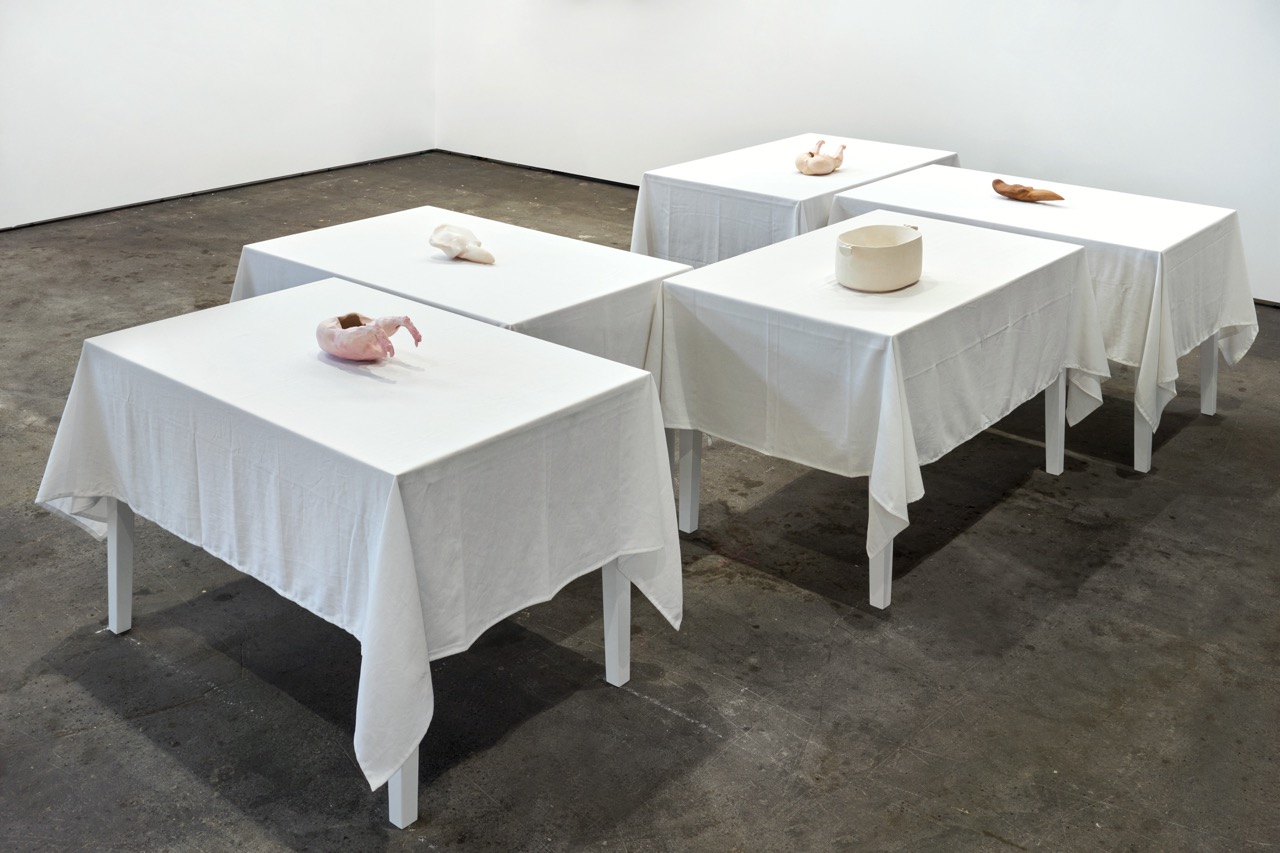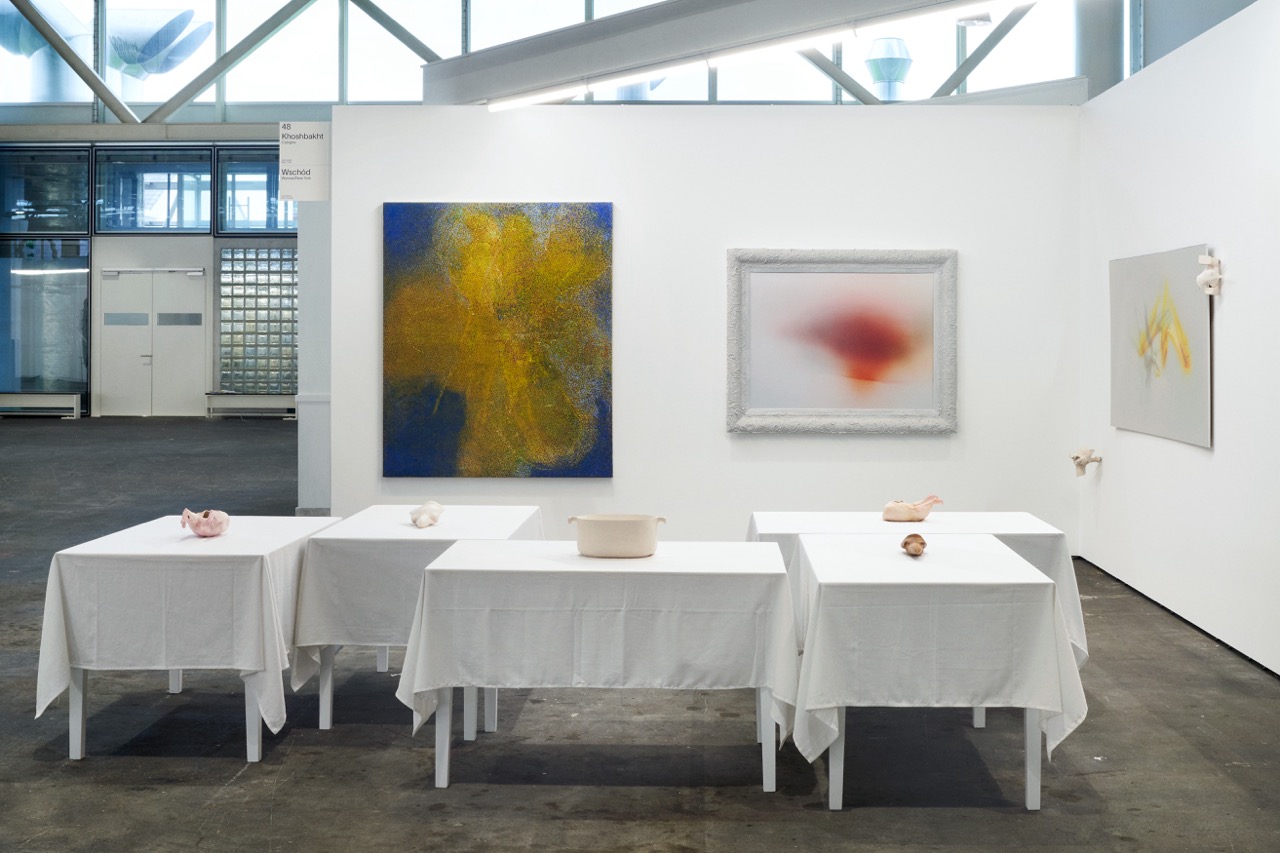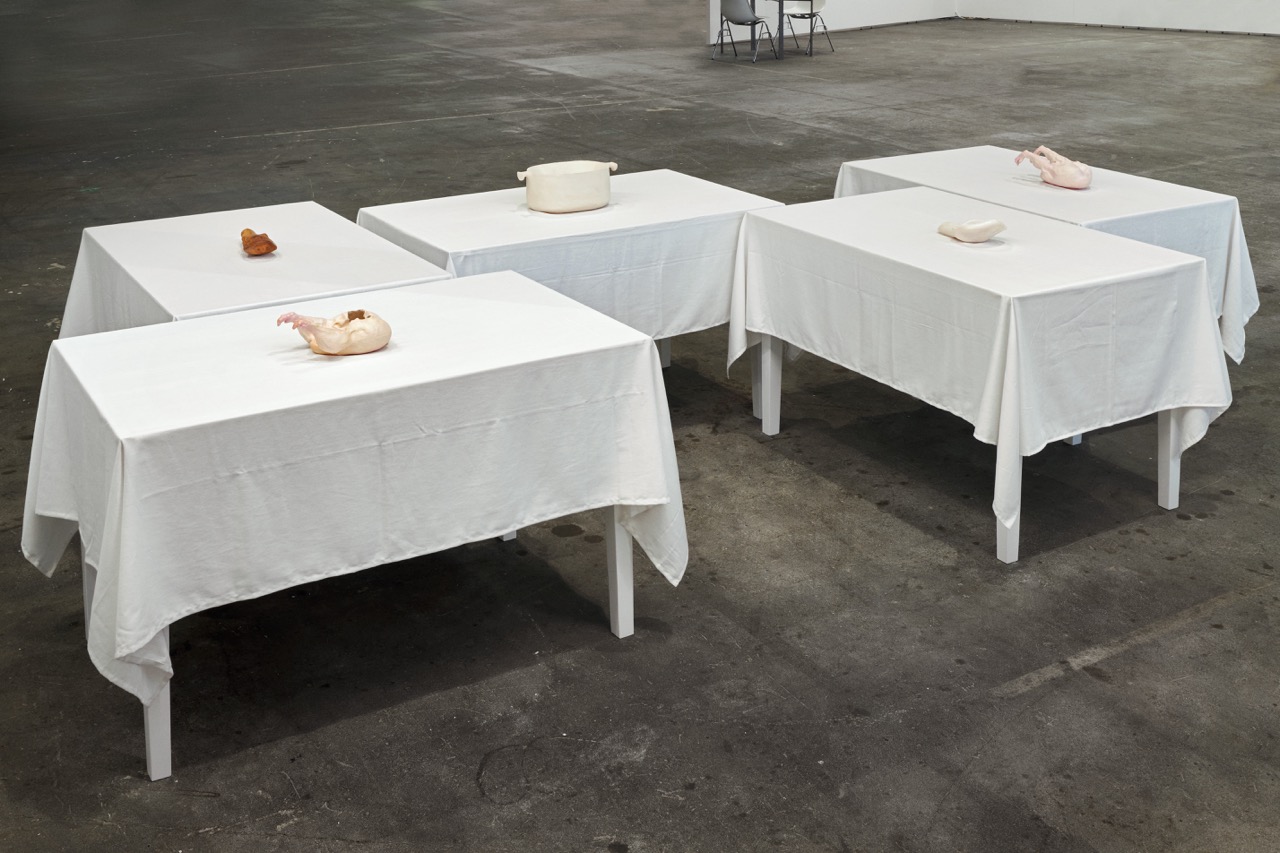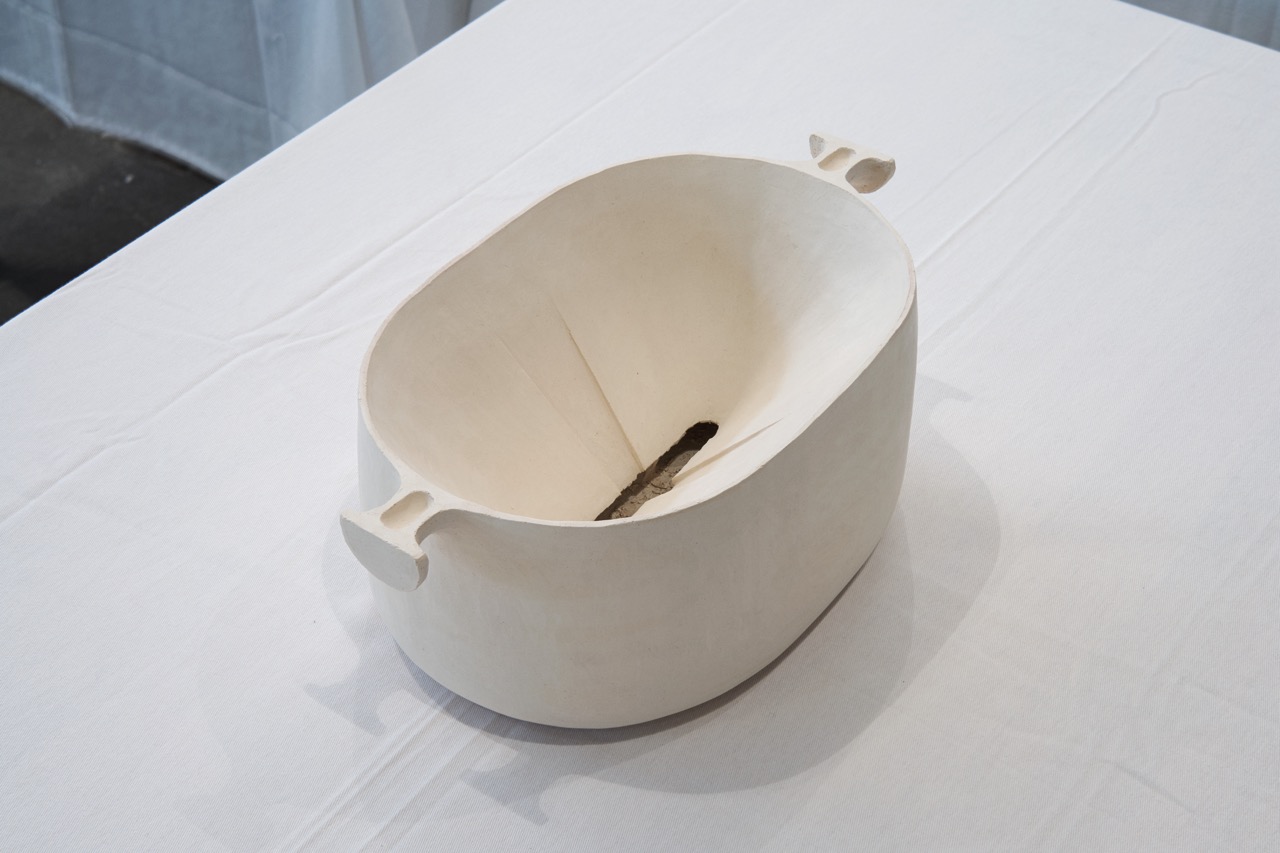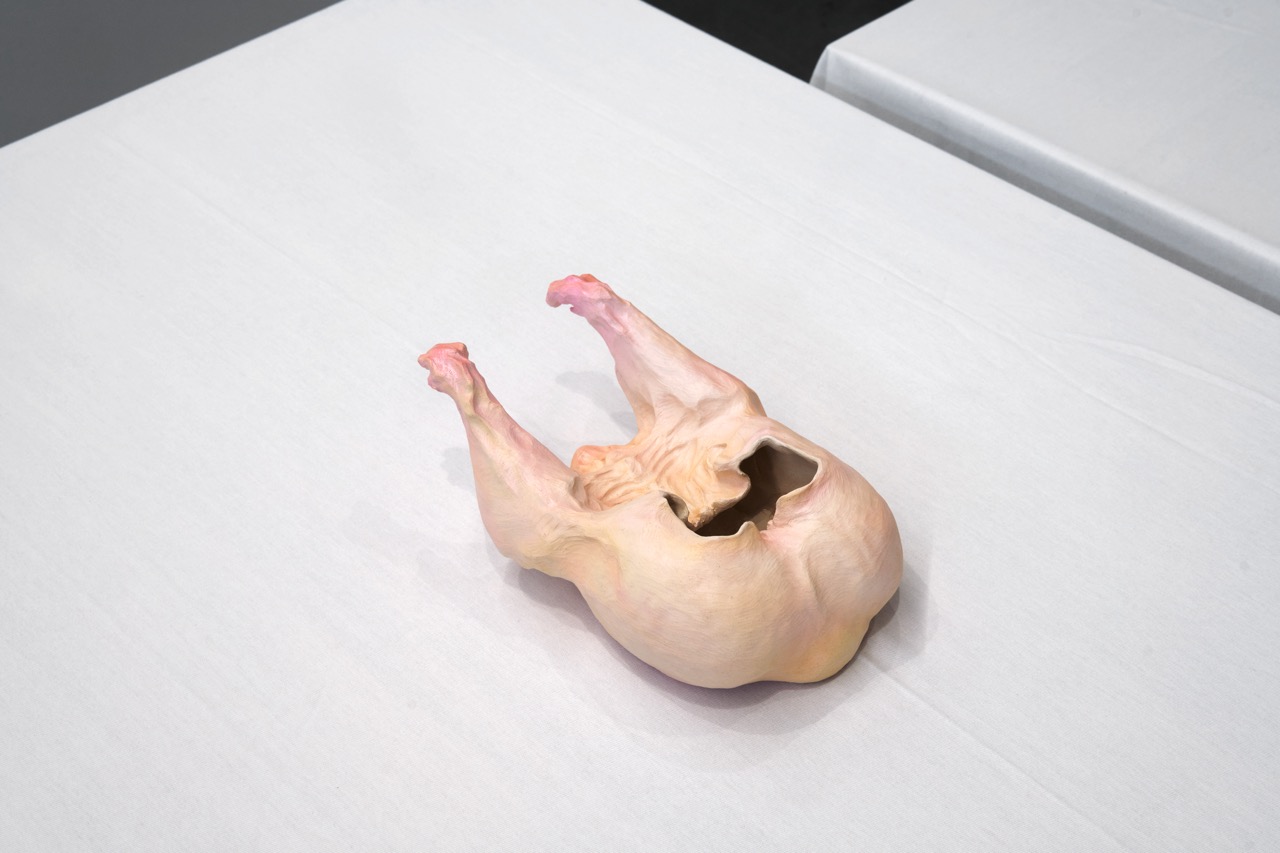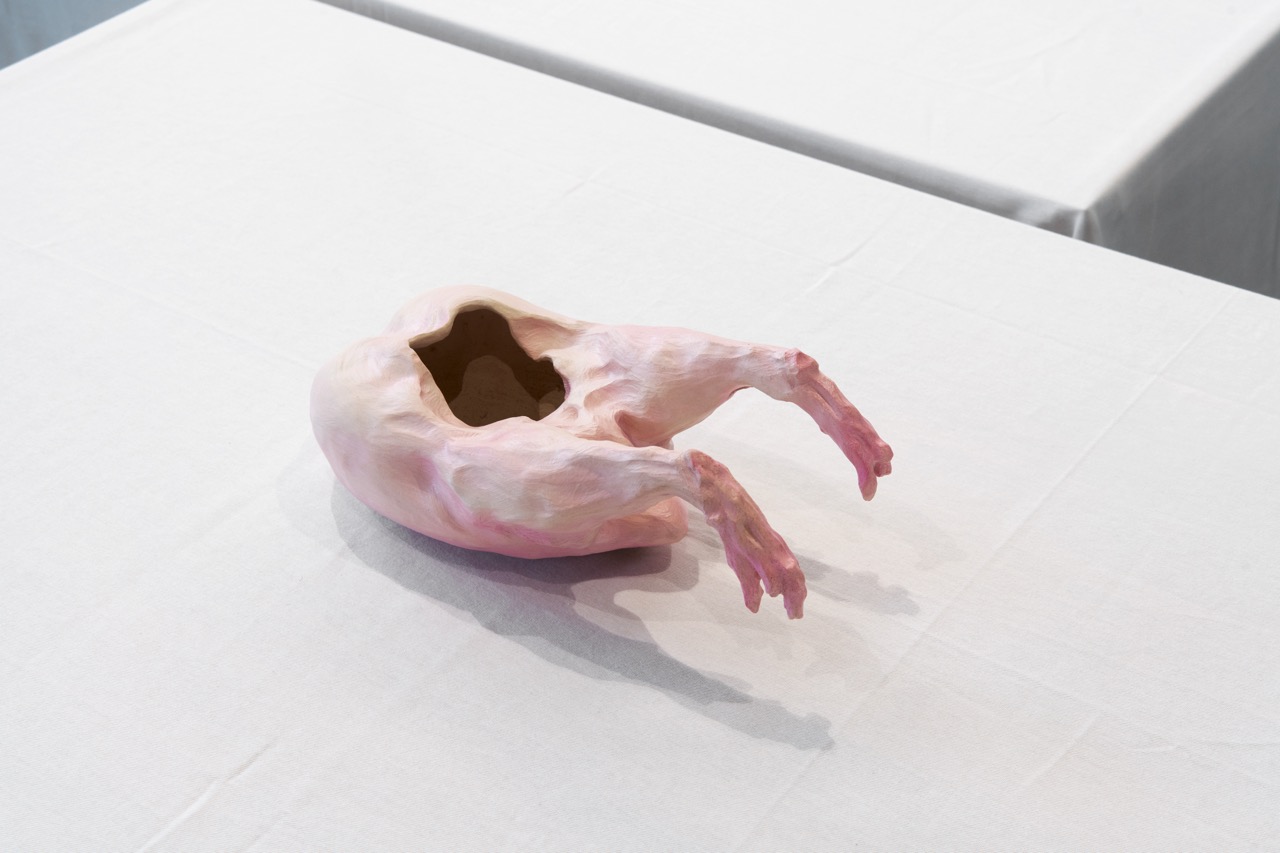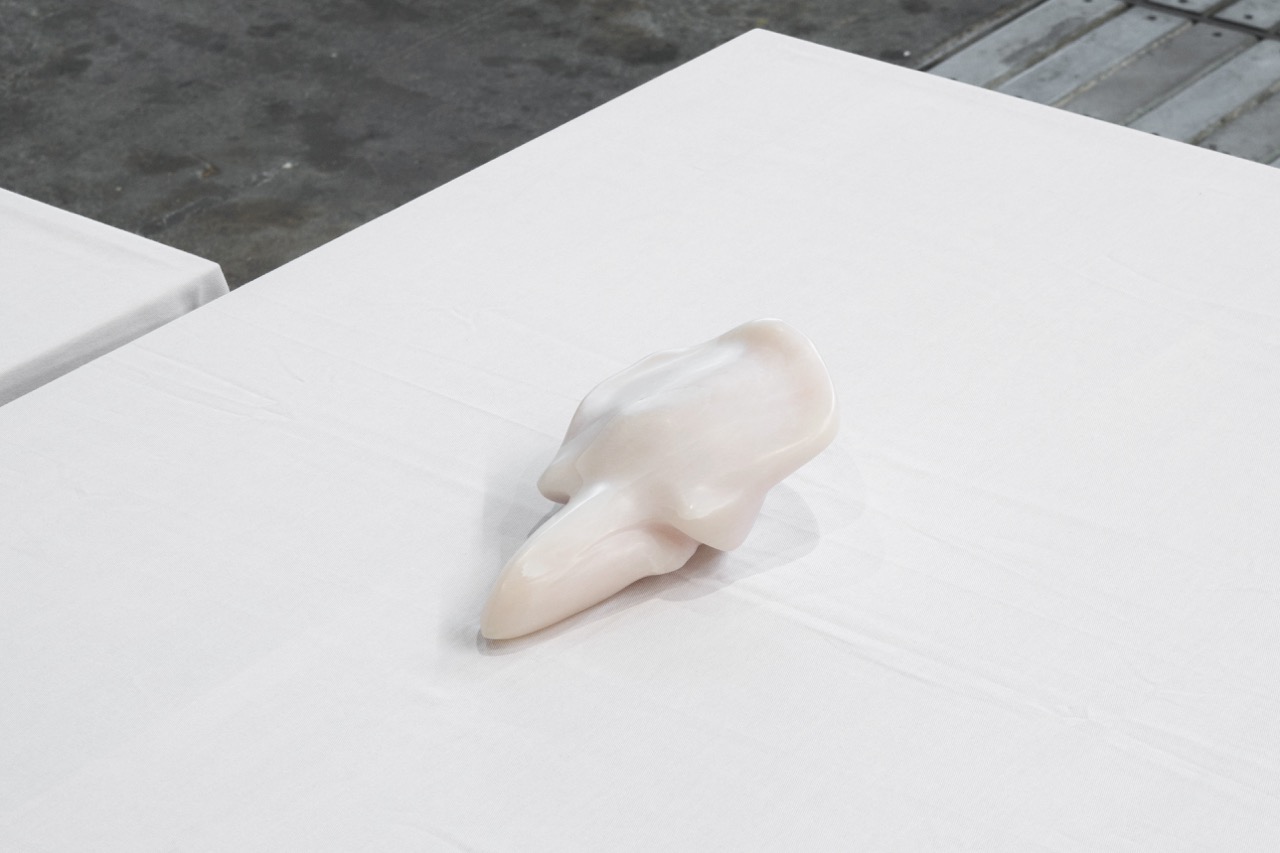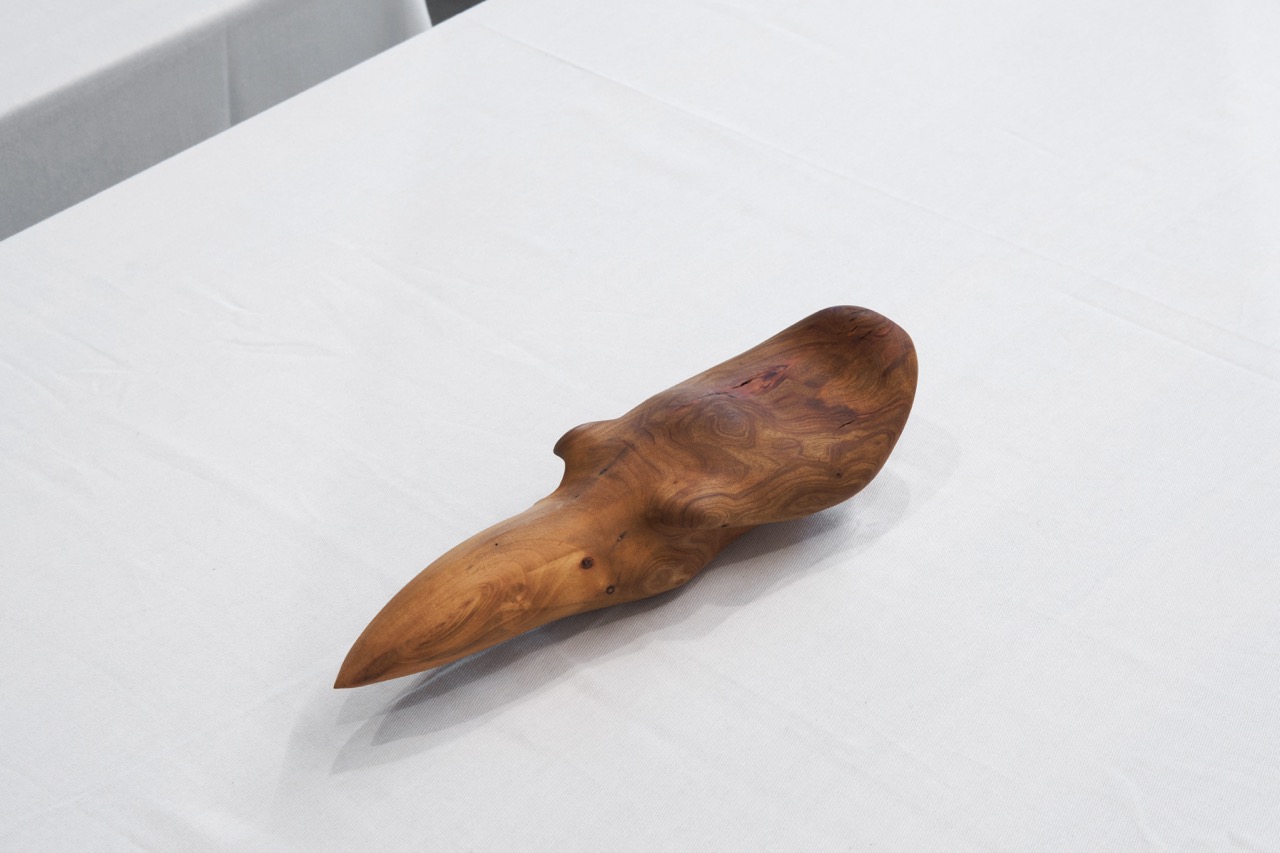–
Liste Basel 2024
Joint stand with Galeria Wschód exhibiting Kamil Dossar
Installation Views
Works
Press Release
Beth Collar‘s new body of work, debuting at Liste Art Fair 2024, includes an ashen-looking ceramic piece that resembles Enzo Mari‘s 1972 „La Mama“ design for Le Creuset cookwa-re, complete with its distinctive T-shaped handles and oval grip indents, but without the lid. Titled Familiar Device, the object additionally features a narrow aperture at the bottom (onthe inside), reminiscent of a miniaturized arrowslit window from a medieval fort, but turnedfacedown. Flanked by slanted grooves sliding toward its center, this opening offers a mereglimpse into what appears to be a bed of debris lying at the base of the pot, contrasting andintensifying the work’s potential for visual associations with the subterranean sense of anunseen presence.
This object draws on an earlier sculpture by Collar, also crafted with pale ceramic and firstexhibited last year in Münster, Germany. Its long and narrow arrowslit similarly opened toa ditch of darkness. Resembling a life-sized, freestanding bathtub, its shape was derivedfrom the artist’s research into the history of Roman sarcophagi and their repurposing in theRenaissance period as basins for public drinking fountains. Collar’s formal language inreworking this shape gestures toward a three-dimensional kind of the so-called rabbit-duckillusion. Unlike a nonobjective approach, it enables the recognition of patterns that unfoldacross the different scales of architecture, the human, and object. It suggests the interpenetra-ting geometry of more than one thing occupying the same spot in space; that an object couldbe more than one. These almost spartan creations are in fact composite projections.
The cocotte sits on one of five identical readymade dining tables, each topped with a sculp-ture. One pair features smooth and streamlined objects carved out of alabaster and wood,resembling the outline of a long-beaked bird skull. Titled Familiarity Rod, their shape alsomirrors a Eurasian coot’s frontal shield, the white patch of bare skin on this common water-fowl’s forehead extending to the base of its bill.
Birds, particularly coots, appear in Collar’s other works too, including a series of drawingson plaster casts. Despite the daily and somewhat domesticated sighting of this red-eyed birdin a place like Cambridgeshire, where Collar grew up and is currently based, there is morethan meets the eye. Their dark secret is that coots practice infanticide, sometimes killingtheir own chicks due to limited food resources to prioritize the survival of the strongest off-spring. The materials, on the other hand, evoke a history of religious iconoclasm, cleansing,and austerity, yet the repeated shape occupies an iconic presence, almost totemic. If there isany nod to the grammar of modernist sculpture here, it likely relates as much to its simula-tion of animistic aesthetics and tendencies as to formal investigations per se.
Titled Centerpiece, the other two objects on the two other tables also have avian shapes.These airbrushed ceramic pieces with highly textured surfaces look like two prepared,headless chickens turned upside down with their wings cut and their clawed feet hangingforward. At the same time, their ruffled cavities have turned them into containers or vessels,like a couple of macabre bowl vases. At the same time, the bottom-up placement also makeseach sculpture suggestive of the hollowed-out shell of a decapitated torso in a Frankensteinpose.
In Collar’s work, empty means capacious, a zone of transit between the living and the inani-mate, between object and organism. Holes and solids mutually articulate objecthood in termsof an outline that can afford getting filled up and emptied of various formal invocations overand over again without falling apart. In other words, Collar’s sculptural practice investiga-tes the shapes of absence and withdrawal to underscore and render sensible the fragility ofbodily presence.

